Nutrition in Cycling - Tips & Insights
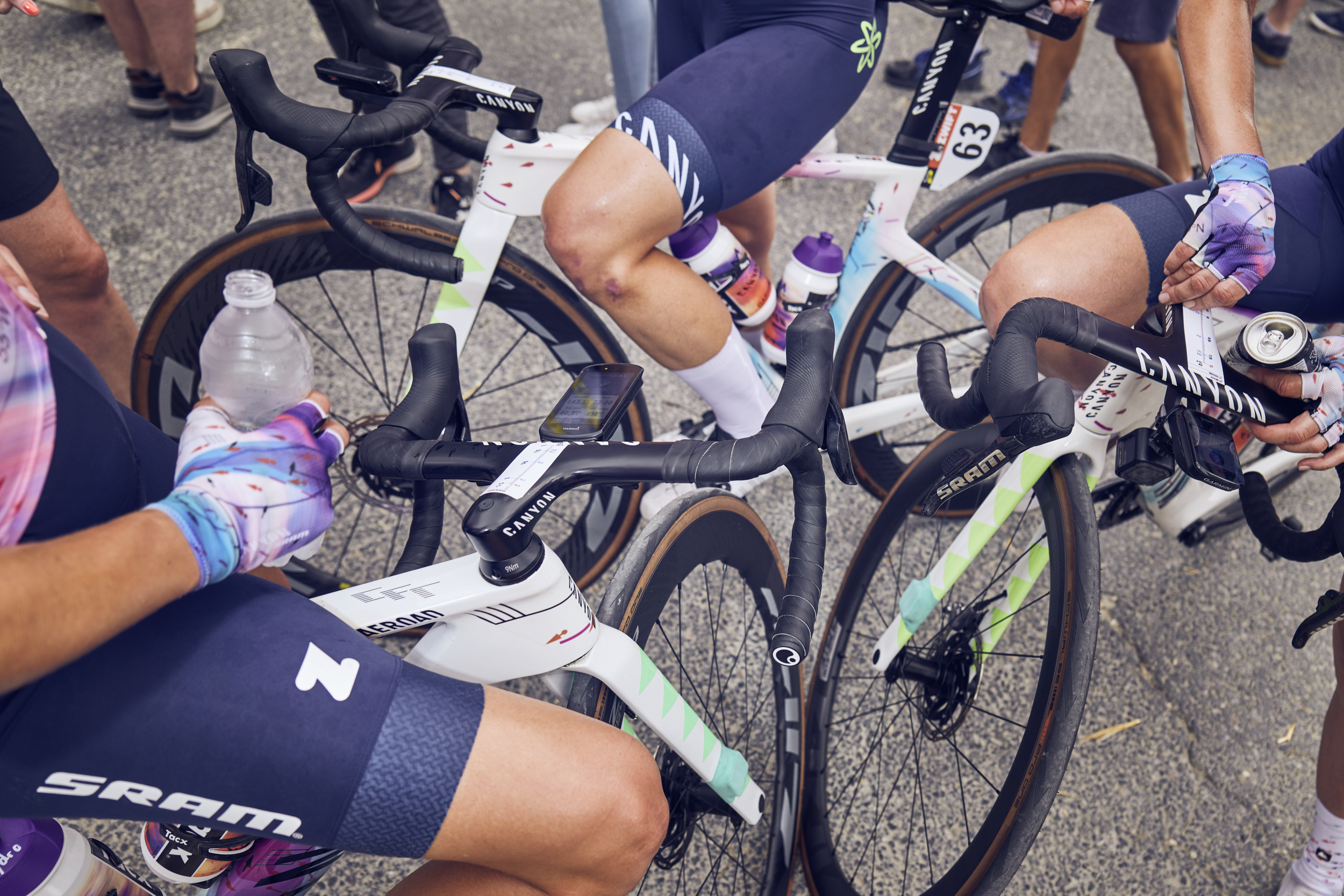
Proper nutrition is crucial in cycling for performance and recovery. Cyclists need a balanced mix of carbohydrates, proteins, and fats. Carbohydrates replenish glycogen stores, proteins support muscle building, and healthy fats provide essential nutrients. Adequate hydration is essential to avoid dehydration. A well-thought-out nutrition strategy can make the difference between victory and defeat.
Nutrition in Cycling
It is always advisable to pay attention to your diet. It promotes well-being and the ability to recover. For dedicated cyclists, ambitious athletes and also recreational riders and weekend cyclists, the same recommendations of the German Nutrition Society (DGE) for a wholesome and balanced diet apply as for the general population. In short, these are the following tips:
- Enjoy a variety of foods
- Eat 5 servings of vegetables and fruits a day
- Choose whole grains instead of white flour
- Complement your diet with animal protein
- Use health-promoting fats (Omega 3/6)
- Reduce sugar and salt intake
- Drink water (instead of sweetened juices and soft drinks)
- Prepare food gently (better to steam than fry; better taste)
- Eat and enjoy mindfully (eat and drink consciously with calm and enjoyment)
- Watch your weight and stay active
Those who follow these principles are very likely to eat healthily and balanced. Dr. Kim Tofaute, sports scientist and one of Europe’s leading bike ergonomists, explains: “Performance is much better with good nutrition. Therefore, even a recreational cyclist should pay attention to a healthy, balanced, and functional diet. At the top level, nutrition is even a crucial component for optimal performance. Occasional ‘dietary sins’ can be more easily tolerated in amateur sports.” Generally, as a cyclist, you belong to the group of endurance athletes with high energy needs. Paying attention to some specific factors can help you get a bit more energy from your diet. The following sections will highlight some sports-specific aspects of nutrition.

The importance of proteins, carbohydrates, and fats in cycling:
Dr. Kim Tofaute explains: “Nutrition has a decisive influence on performance weight. The lighter the athlete, the easier it is to ride uphill. Moreover, with less weight, unnecessary ballast, i.e., body fat, also decreases. Since muscle mass is often smaller with lower weight, professional athletes adjust muscle mass to the requirements. As a sprinter, you need muscles more than a climber. Nutrition is also the fuel for the body. Cyclists should pay attention to a fundamentally healthy, balanced, and functional diet. It can and should also be super tasty. For high performance in cycling, it is important that the tank is full, i.e., the glycogen stores are as full as possible. In the end, the one who still has glycogen in the tank (in reserve; see below) is ahead. To slow down the metabolism of glycogen, the body is conditioned through fat metabolism training so that energy is provided to a high degree through fats. This training is particularly noticeable for beginners.”
Proteins
Proteins play an important role in muscle building and repair. They are essential for recovery after hard training sessions and competitions. Proteins consist of amino acids, which are the building blocks of muscles. For cyclists, it is important to consume enough protein to strengthen muscles and prevent muscle breakdown.
Carbohydrates
Carbohydrates are the primary energy source for cyclists. They are stored in the body as glycogen, which is stored in the liver and muscles. During intense training sessions and competitions, the body taps into these glycogen stores to quickly provide energy. Adequate carbohydrate intake is crucial to maximize glycogen stores and ensure a constant energy supply. Dr. Kim Tofaute explains: "Carbohydrate supply plays an outstanding role in the body's energy production. Therefore, the basic diet should have a high proportion of carbohydrates. A rough guideline is about 60%. Before cycling, bread, muesli, pasta, or rice are good options to fill the 'tank' once again. While cycling, small carbohydrate snacks (fruit, cake, bars, gels, etc.) help refill the 'tank.' The replenishment should start after about an hour and be repeated every 30 to 60 minutes, depending on the load. Professionals consume between 0.5 and 1 gram of carbohydrates per kilogram of body weight per hour during intense loads."
Fats
Fats are another important energy source, especially during longer, less intense activities. They help stabilize energy production and contribute to the absorption of fat-soluble vitamins. It is important to include healthy fats like Omega-3 and Omega-6 fatty acids in the diet, as they have anti-inflammatory properties and support overall health. However, endurance athletes should not rely solely on their fat reserves or fats as nutrition. Here is an old saying: Fats burn only in the fire of carbohydrates. This means that carbohydrates must always be supplied to keep the fat metabolism going. Carbohydrates are the muscles gasoline, fats the muscles diesel for cyclists. Proteins can be considered the building material of muscles in this context.
What should you eat before cycling?
Let’s look at this in terms of optimization. Just as things are developed and insights gained in Formula 1 racing that are then used in the production of cars, we can look at competitive cycling and apply these insights to the average cyclist and their weekend tours. Those who have a race or a strenuous tour ahead should focus on loading their carbohydrate stores. Carbohydrate loading, also known as carb-loading, is a method to maximize glycogen stores in the muscles before a competition or very intense training days. This usually happens in the last three days before the competition or a long, strenuous bike tour. In performance-oriented sports, this is also known as tapering. During this time, carbohydrate intake should be increased, and training intensity reduced. Suitable foods are rice, pasta, bread, potatoes, and fruit.
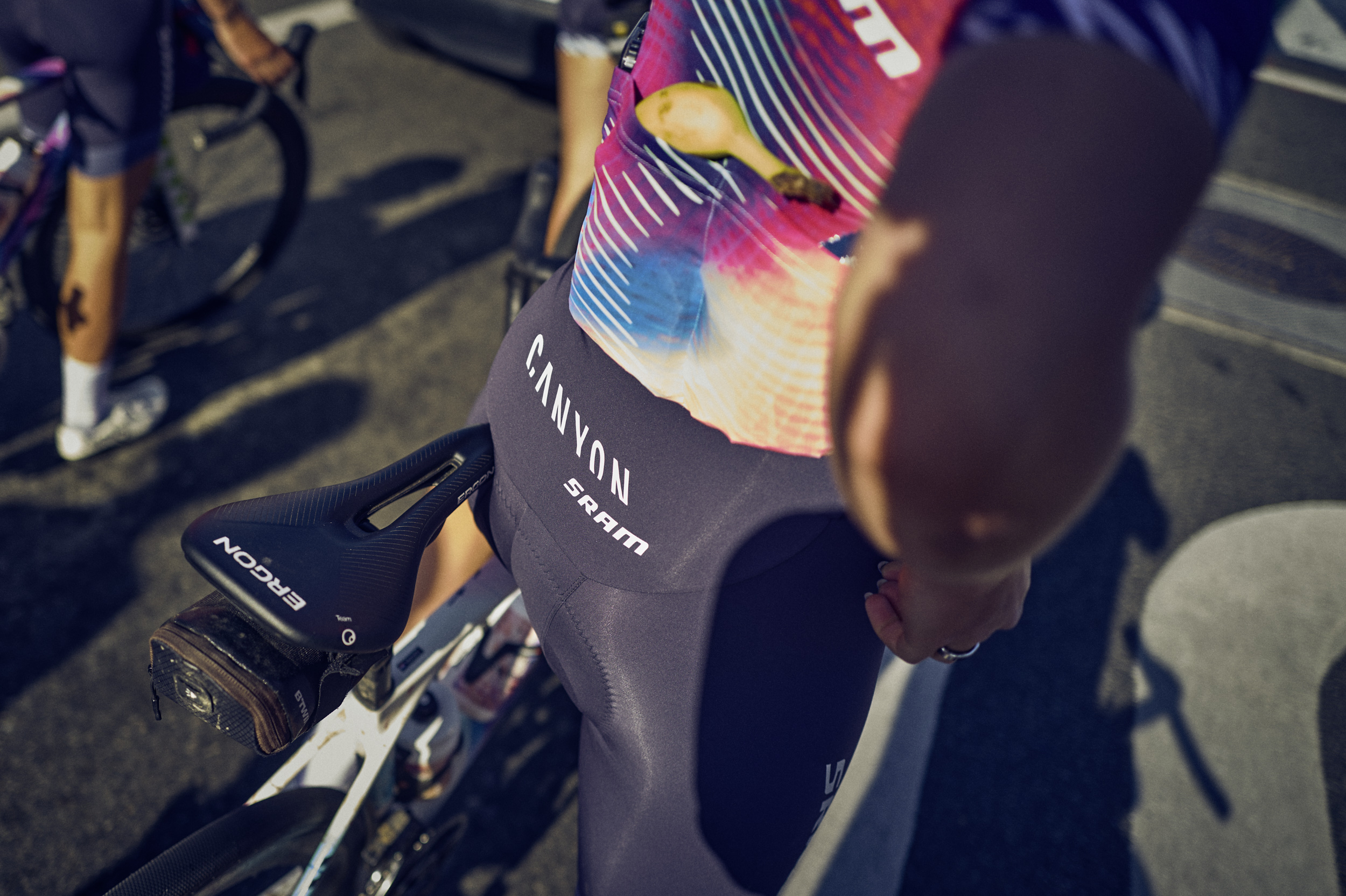
What should you eat before cycling and racing?
On the day of the competition or a long tour, breakfast should be easily digestible and rich in carbohydrates. An example would be a bowl of oatmeal with bananas and honey or a portion of pasta with tomato sauce (no joke, in professional sports, hearty meals are sometimes eaten even for breakfast). It is advisable to have breakfast about three to four hours before the start to allow enough time for digestion. Shortly before the competition, about 30 to 60 minutes before, a small, carbohydrate-rich snack can be consumed, such as a banana or an energy bar.
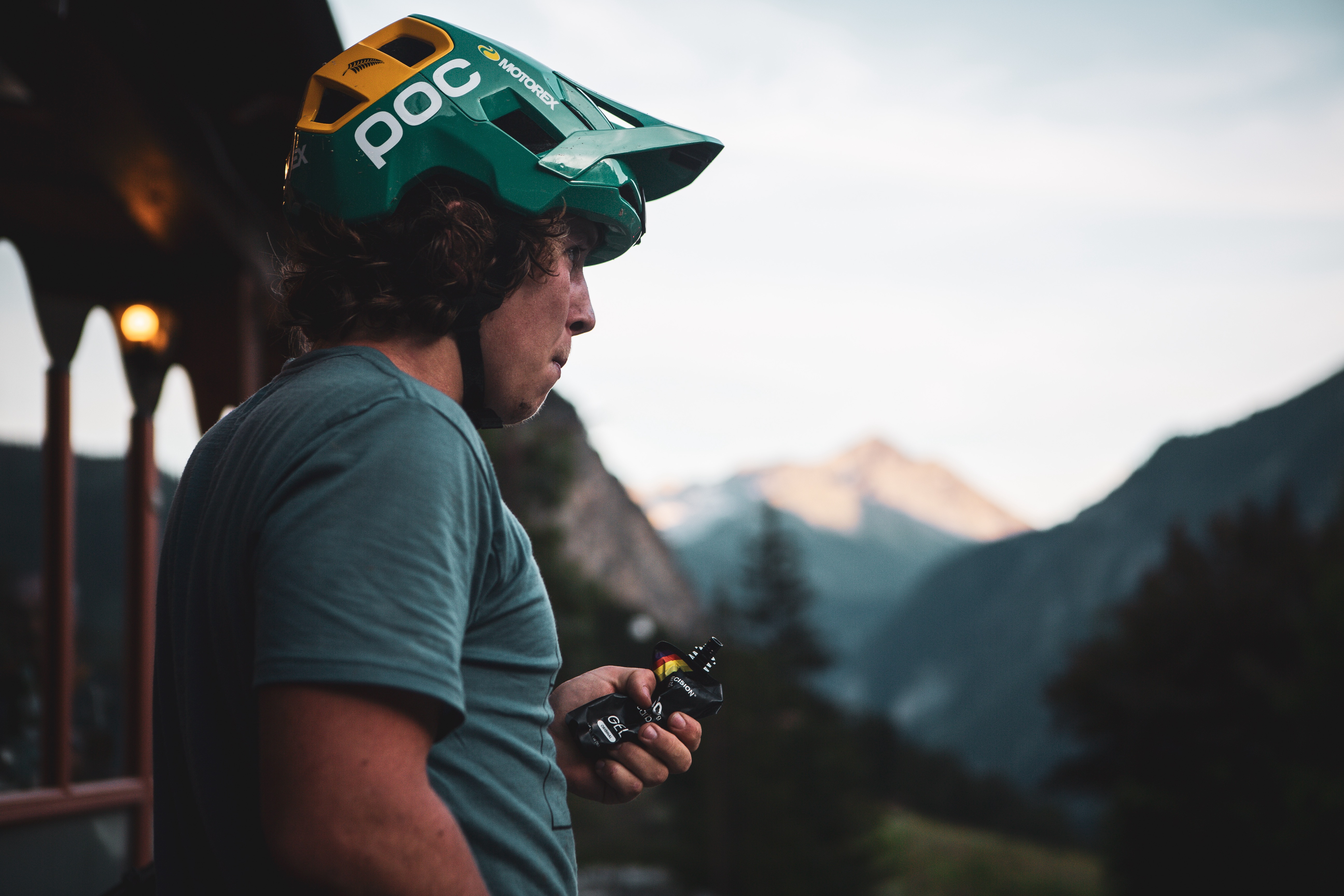
What should you drink before cycling?
"Maintaining a balanced fluid level in the body," says Dr. Kim Tofaute, "is important for optimal function and performance. Depending on the intensity, fitness level, and external factors (temperature, sunlight, wind, etc.), the body loses varying amounts of fluid. As a good guideline, one bottle (0.5 liters) of water should be drunk per hour." But sports drinks or fruit spritzers are also suitable, according to Tofaute. It is further recommended to increase fluid intake the day before a competition or a very strenuous bike tour. On the day of the competition, continuous drinking should begin with a large glass of water or a sports drink at breakfast. About 15 to 20 minutes before the start, another smaller amount of fluid can be consumed.
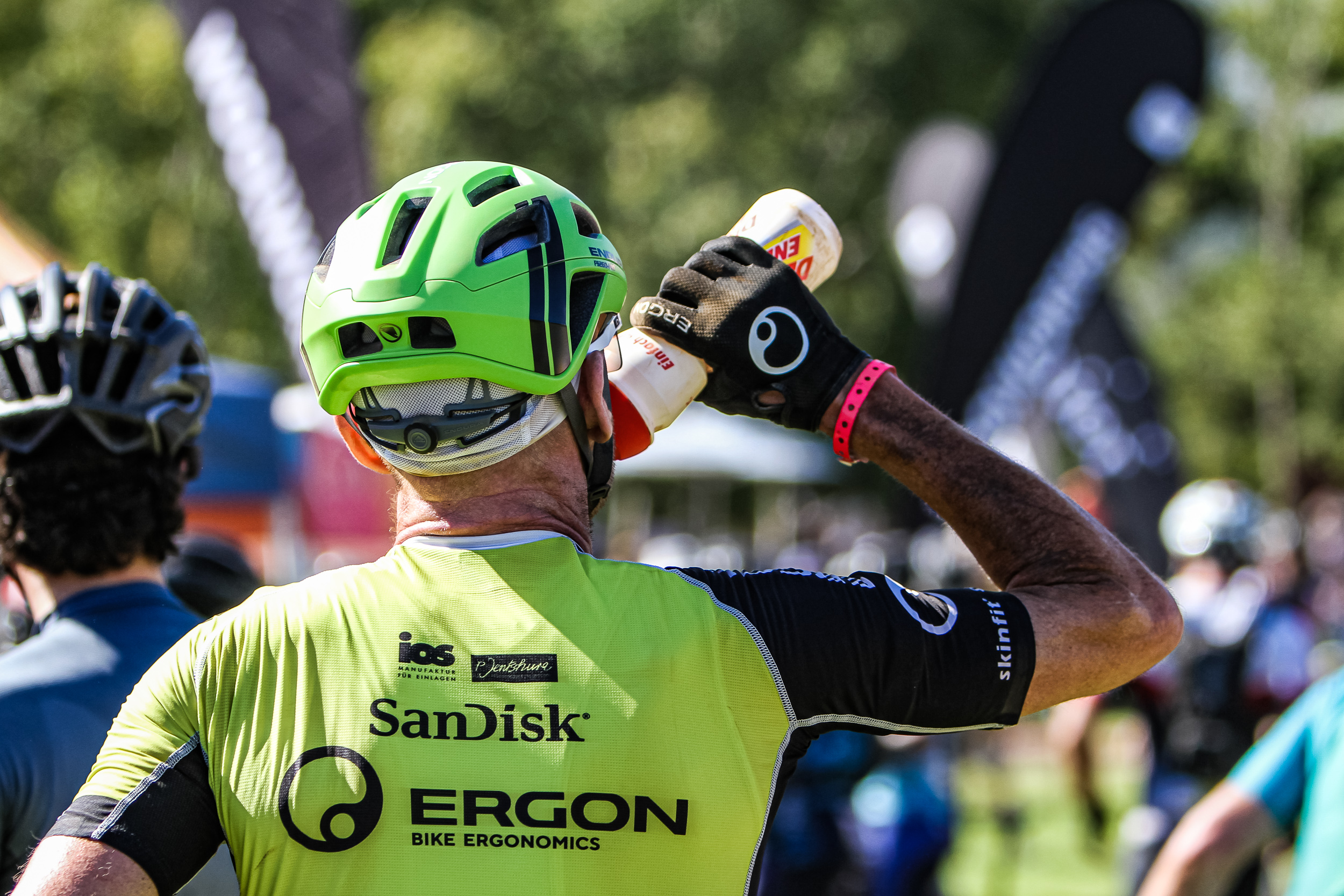
How do I eat during a bike ride or race?
During a competition, it is important to maintain glycogen stores (see above: carbohydrate stores), especially during longer events. Cyclists should consume carbohydrates every 20 to 30 minutes during the competition to ensure a constant energy flow. Suitable sources are energy bars, gels, bananas, or other carbohydrate-rich snacks. A general guideline is to consume about 60 to 90 grams of carbohydrates per hour during intense exertion.
What should I drink while cycling?
Fluid intake during a high-intensity bike ride is just as crucial as food intake. Dehydration can lead to a significant drop in performance. Cyclists should try to drink small amounts of fluid every 15 to 20 minutes, ideally about 500 to 750 milliliters per hour, depending on weather conditions and individual sweat rate. (Tip: Why not set a timer on your wristwatch or smartphone to remind you to drink every 20 minutes, especially in hot weather?!) Isotonic sports drinks are particularly beneficial as they provide not only water but also electrolytes like sodium, potassium, and magnesium, which are lost through sweat but are essential for muscle function.
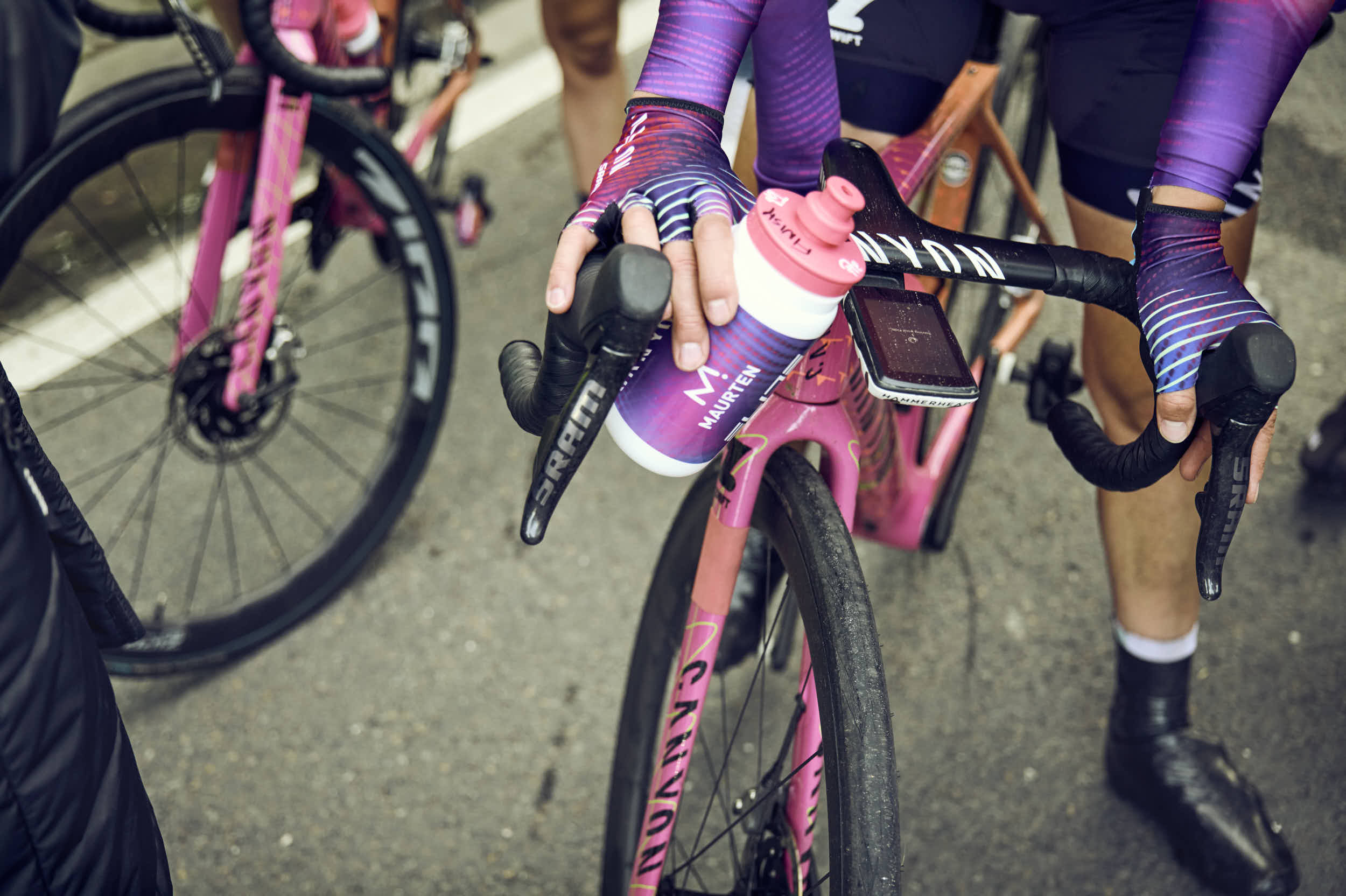
About electrolytes and salt tablets:
During long competitions and hot conditions, the loss of electrolytes through sweat can be significant. Electrolytes are important to maintain fluid balance in the body and prevent muscle cramps. Salt tablets or electrolyte-rich drinks can help compensate for these losses. Cyclists should adjust their electrolyte intake based on their individual sweat rate and competition conditions. Those who want precise information can consult a sports scientist/nutritionist.
Here is an example of a nutrition plan for an event:
Three days before the competition or bike tour: Carbohydrate loading:
- Breakfast: Large bowl of oatmeal with berries and honey, a glass of orange juice
- Lunch: Whole grain pasta with vegetables and lean meat (chicken or turkey), a piece of fruit
- Dinner: Rice with fish and steamed vegetables, a glass of water
- Snacks: Fruit, muesli bars, smoothies
On the day of the event:
- 3 to 4 hours before the competition (breakfast): A portion of oatmeal with banana and honey, a glass of apple juice, a glass of water
- 30 to 60 minutes before the start: An energy bar or a banana, a glass of water
During the competition:
- Every 20 to 30 minutes: An energy bar or gel, a piece of fruit (like half a banana)
- Every 15 to 20 minutes: A few sips of an isotonic sports drink (available in various flavors)
After the competition, the nutrition for recovery could look like this:
Nutrition after the competition is crucial for quick recovery and preparation for future training or competitions. In the first 30 minutes after the competition, a mix of carbohydrates and proteins should be consumed to replenish glycogen stores and support muscle repair. A ratio of about 3:1 (carbohydrates to proteins) is recommended.
Examples of recovery foods:
- A recovery drink or smoothie made from milk, banana, and protein powder
- A sandwich with lean meat and vegetables
- A bowl of yogurt with fruit and honey
There are, of course, individual differences
Every cyclist is unique. Therefore, it may be necessary to adjust the diet individually. Factors such as body weight, gender, training intensity, competition duration, and personal preferences play a role in designing the nutrition plan. It can be helpful to test different strategies during training to find the optimal nutrition for competition day. Especially for professional athletes and ambitious amateurs, visiting a sports scientist and/or nutrition expert can make sense. These professionals can tailor nutrition and athletic activity in training and competition based on individual data to optimize performance.
Conclusion
A well-thought-out nutrition and dietary strategy is crucial for performance in cycling. And what is right for professionals or strong amateur athletes cannot be wrong for recreational and weekend cyclists. Carbohydrates provide the necessary energy, proteins support muscle building and recovery, and fats offer a stable energy source during longer exertions. Nutrition before and during the competition should be carefully planned to ensure the body is optimally supplied and can perform at its best. By choosing the right foods and timing their intake correctly, cyclists can significantly improve their endurance, strength, and recovery ability.